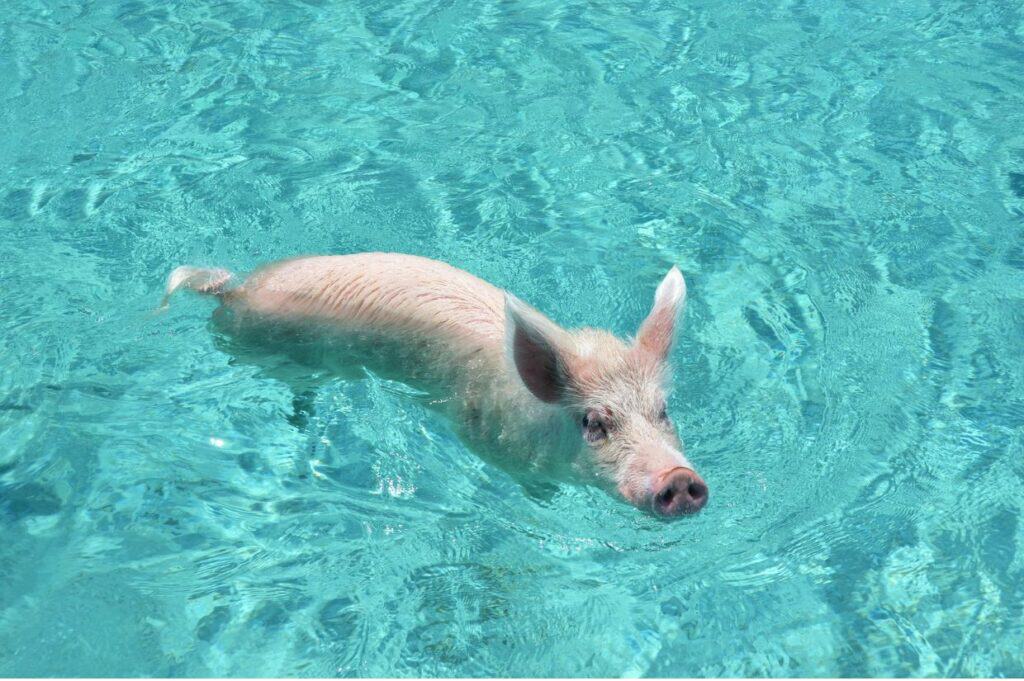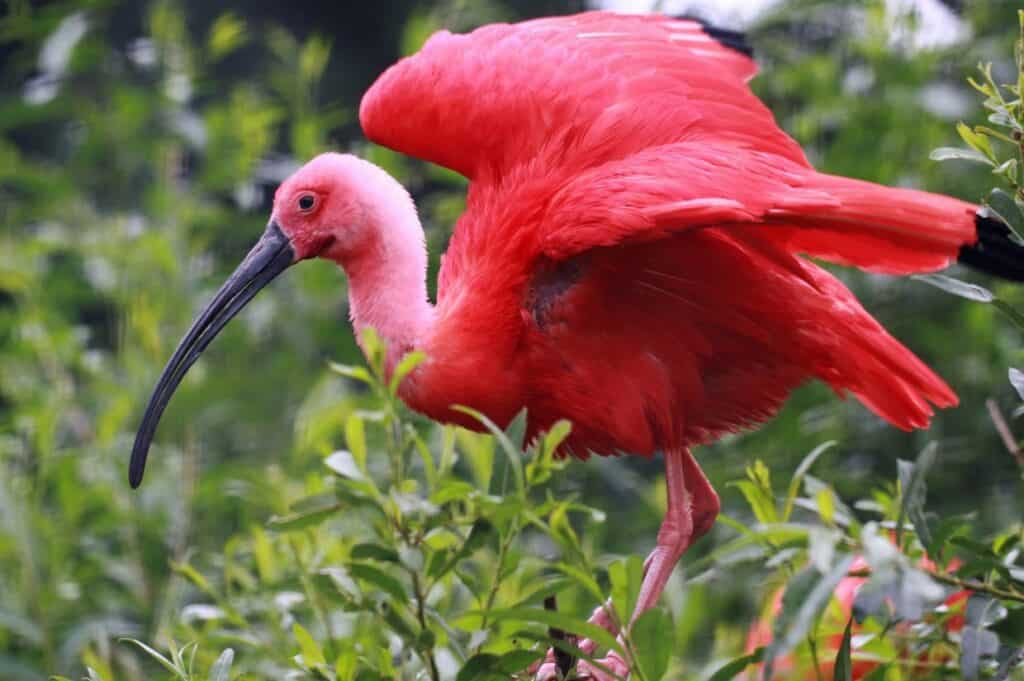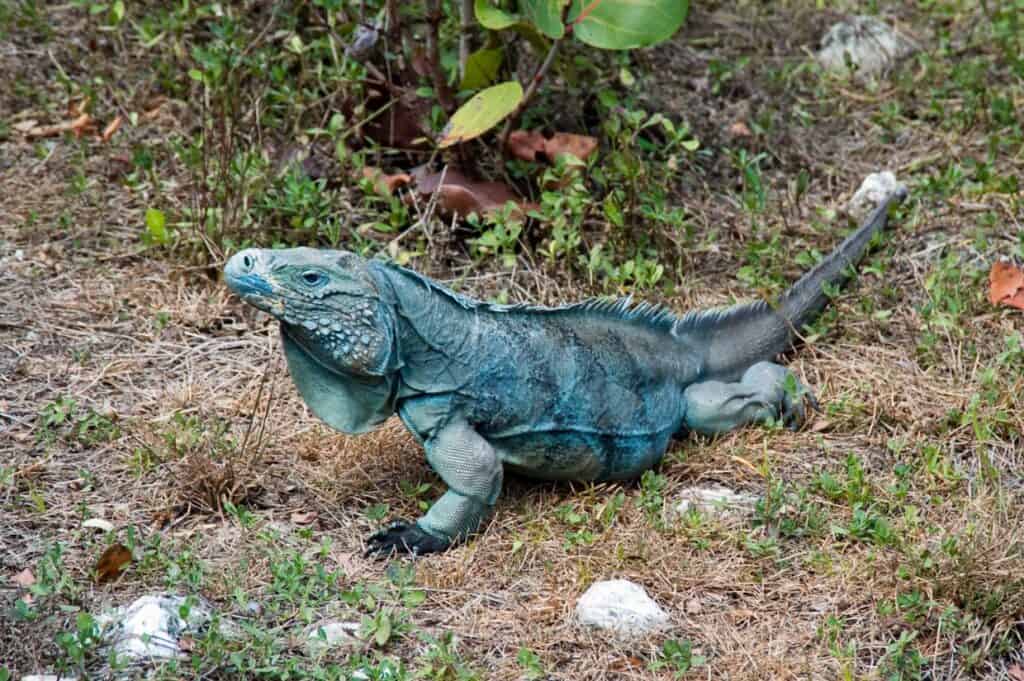If you’re anything like me, the idea of a Caribbean getaway instantly conjures images of pristine beaches, turquoise waters and rum cocktails. But hold up — there’s another side to this paradise that often flies under the radar: The incredible wildlife. Yes, the Caribbean is filled with unique animals, and a wildlife safari here can be as thrilling as any African adventure. So, grab your binoculars, and let’s dive into some of the best spots to get up close and personal with the Caribbean’s wild side.

The Bahamas: Swimming pigs and rock iguanas
Let’s kick things off with a splash — quite literally! The Bahamas is home to one of the most whimsical wildlife encounters you’ll ever have. Picture this: You’re on a boat, cruising through the Exumas, and suddenly you see pigs swimming towards you. These swimming pigs of Big Major Cay are as friendly as they are photogenic. No one knows exactly how they got there, but they’ve become an island staple and are always ready for a swim with visitors.
After you’ve had your fill of pig paddling, head over to Allen Cay. Here, you’ll meet the endangered Bahamian rock iguanas. These prehistoric-looking creatures are quite approachable and love to bask in the sun. Be sure to bring some grapes — their favorite treat.
Trinidad and Tobago: Scarlet ibis and leatherback turtles
Moving south, Trinidad and Tobago offer a feast for the eyes with their vibrant birdlife. The Caroni Swamp is the place to be, especially if you’re keen on spotting the scarlet ibis. These striking birds, with their bright red plumage, gather in the swamp’s mangroves at dusk, creating a stunning spectacle as they come in to roost.

And for a nighttime adventure, Trinidad’s beaches transform into a haven for leatherback turtles. These majestic giants come ashore between March and August to lay their eggs. Watching a leatherback turtle, which can weigh up to 1,500 pounds, laboriously make its way up the beach is an experience that stays with you forever. Just remember, it’s crucial to follow local guidelines to ensure these creatures aren’t disturbed.
Puerto Rico: Coquí frogs and Puerto Rican parrots
In Puerto Rico, the call of the wild takes on a melodic tune. The tiny coquí frog is more often heard than seen, but its distinctive “ko-kee” call is synonymous with the island. Take a night hike in El Yunque National Forest, and you’ll be serenaded by a chorus of coquís. These little frogs are a symbol of Puerto Rican pride, and spotting one is like finding a hidden gem.
For bird lovers, Puerto Rico also has the rare and beautiful Puerto Rican parrot. Once on the brink of extinction, conservation efforts have brought this colorful bird back from the edge. Head to the Río Abajo State Forest or El Yunque to catch a glimpse of these vibrant green parrots flying free.
Dominica: Sperm whales and imperial parrots
Dubbed the “Nature Island,” Dominica is a wildlife enthusiast’s dream. This lush island is one of the few places in the world where you can see sperm whales year round. Join a whale-watching tour, and you might just witness these magnificent creatures breaching the surface or hear their haunting songs through a hydrophone.
Dominica is also home to the imperial parrot, or Sisserou, the island’s national bird. Found only in the dense rainforests, spotting this elusive bird requires patience and a bit of luck. The best chances are in the Morne Diablotin National Park, where these parrots thrive in the wild canopy.
Jamaica: Doctor bird and crocodiles
Jamaica is bursting with vibrant culture and equally vibrant wildlife. The doctor bird, also known as the Jamaican hummingbird, is a must see. This tiny bird, with its iridescent feathers and long tail, is beautiful and fast. Visit the Rocklands Bird Sanctuary near Montego Bay, where you can feed these delightful creatures right from your hand.
For a bit more adrenaline, take a trip to the Black River. Here, you’ll find the American crocodile lazily drifting in the waters. A guided boat tour will get you safely close enough to admire these ancient reptiles, some of which can grow up to 16 feet long.
The Cayman Islands: Blue iguanas and stingrays
Last but certainly not least, the Cayman Islands offer unique wildlife encounters both on land and sea. The blue iguana, native to Grand Cayman, is a true success story of conservation. Once critically endangered, these strikingly blue lizards can now be seen at the Queen Elizabeth II Botanic Park. They’re known for their vibrant color and dinosaur-like appearance.

For an unforgettable underwater experience, head to Stingray City. This shallow sandbar is home to a friendly population of southern stingrays. Wade into the clear waters and these gentle creatures will glide around you, often brushing up for a friendly pat.
Ready to safari?
So, there you have it — the Caribbean’s wild side in all its glory. Each island offers something unique, from the playful pigs of the Bahamas to the majestic sperm whales of Dominica. Whether you’re a seasoned wildlife enthusiast or just looking to add a bit of adventure to your beach vacation, these Caribbean wildlife safaris promise experiences you’ll treasure forever. Now, pack those binoculars, put on your safari hat and get ready for a Caribbean adventure like no other.